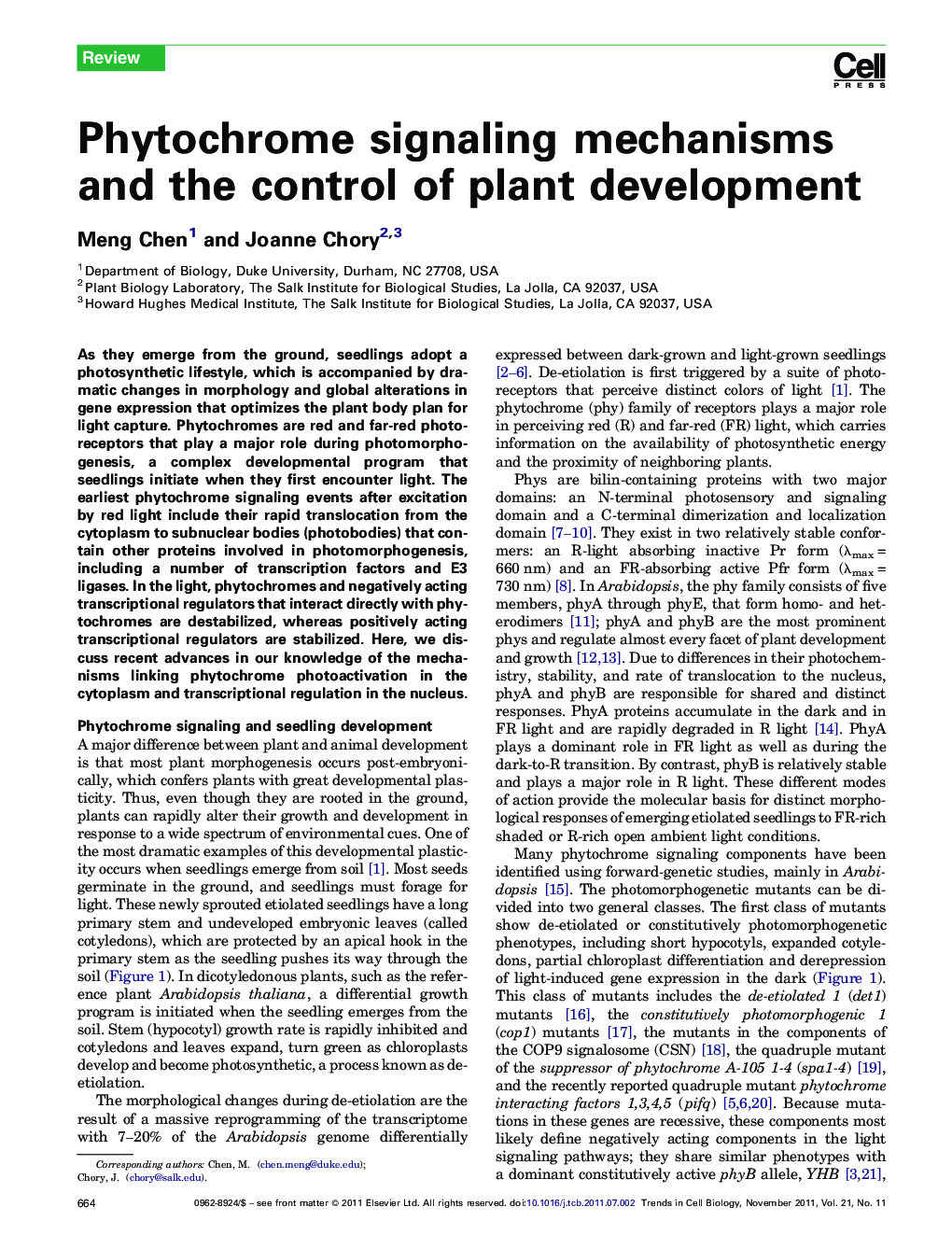| Article ID | Journal | Published Year | Pages | File Type |
|---|---|---|---|---|
| 2204715 | Trends in Cell Biology | 2011 | 8 Pages |
As they emerge from the ground, seedlings adopt a photosynthetic lifestyle, which is accompanied by dramatic changes in morphology and global alterations in gene expression that optimizes the plant body plan for light capture. Phytochromes are red and far-red photoreceptors that play a major role during photomorphogenesis, a complex developmental program that seedlings initiate when they first encounter light. The earliest phytochrome signaling events after excitation by red light include their rapid translocation from the cytoplasm to subnuclear bodies (photobodies) that contain other proteins involved in photomorphogenesis, including a number of transcription factors and E3 ligases. In the light, phytochromes and negatively acting transcriptional regulators that interact directly with phytochromes are destabilized, whereas positively acting transcriptional regulators are stabilized. Here, we discuss recent advances in our knowledge of the mechanisms linking phytochrome photoactivation in the cytoplasm and transcriptional regulation in the nucleus.
